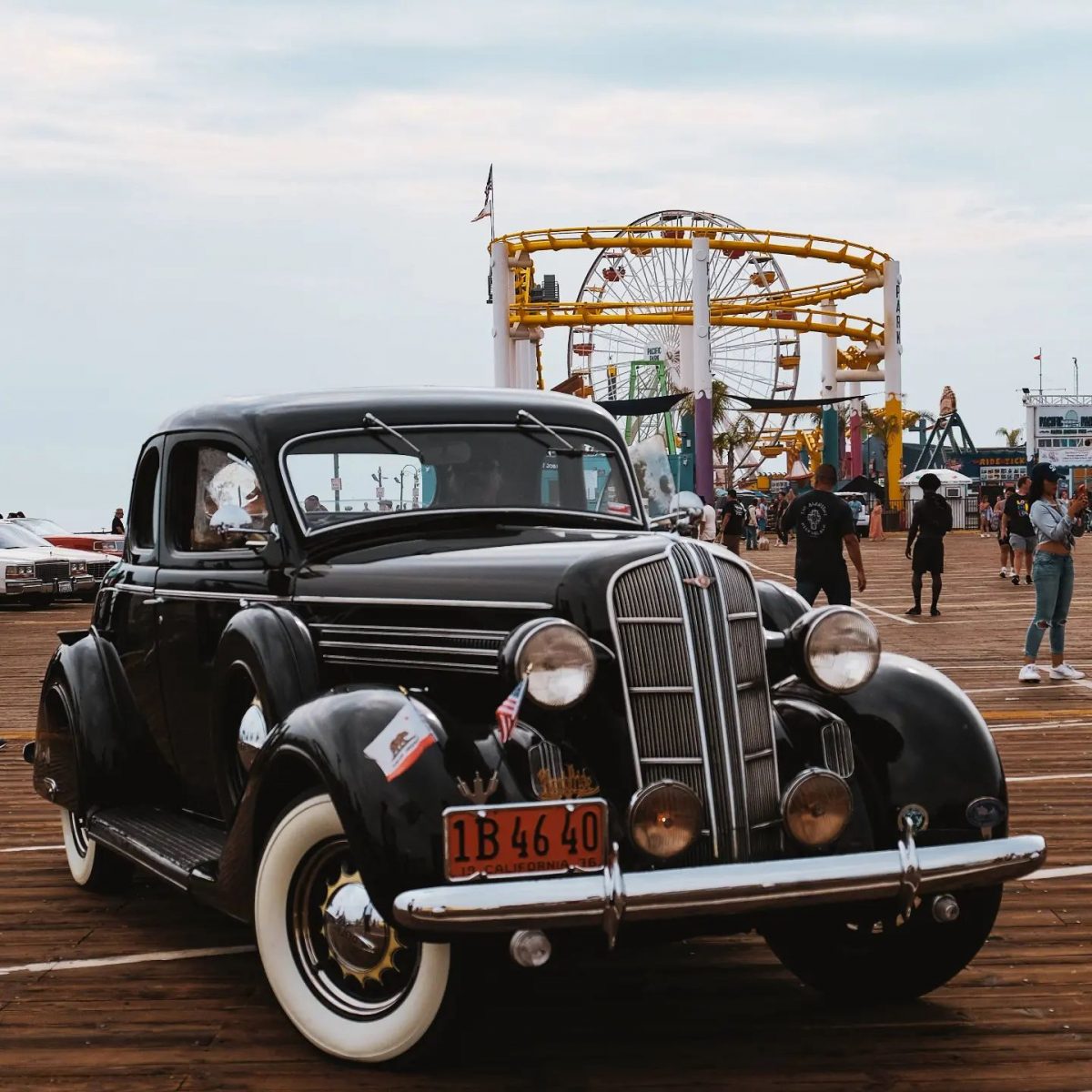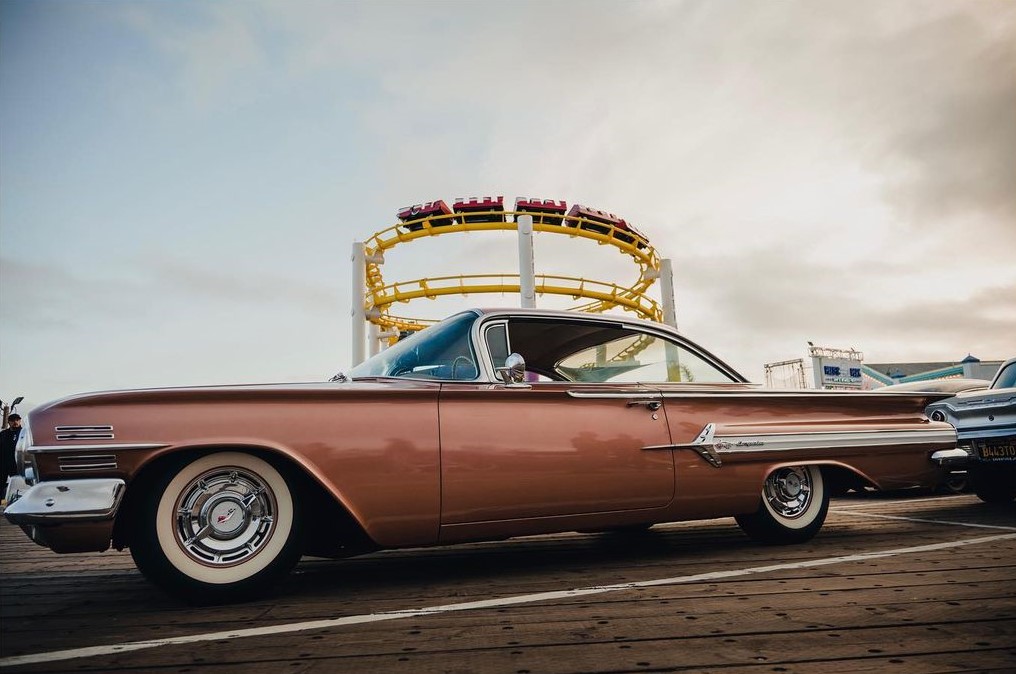A History of Lowriders in Los Angeles
Published on December 6, 2022
From Tijuana to the Santa Monica Pier, lowriders remain a pillar for the Mexican American communities & an essential preservation of their history.
With the introduction of the Santa Monica Pier’s Local’s Night, a lot of our west-side natives were able to get an up-close look at the lowriders from Venice. Although the site is common for those who grew up in Southern California, many tourists gather to see the famed Chicano culture in the lush & purple-hued sunset. For the tourists, their only understanding of lowriders comes from pop-culture hits like Pimp My Ride (which included adaptations in the UK, Brazil, Indonesia, and more) & movies like Training Day or Blood In Blood Out. For the locals, it’s a homely sign & a reminder that the Latinx community remains strong, even as rent prices & inflation drives them out. With the constant popularization of POC culture in modern media, it’s difficult to forget where certain trends come from. For locals & tourists, it’s important to know that lowrider history started almost 100 years ago & it really became popular right here – in Los Angeles.
In the mid 1940’s, Mexican American vets came back home to Tijuana to purchase the best cars they could. Using the mechanical skills they learned in the army, they modified Chevys to be “low & slow.” Cars like the 1940 Chevy Master Deluxe were lowered by cutting coils or filling their trunks with sand bags. As Mexican American seeked identity and recognition in the states, their attempt at uniqueness came in the form of the Pachuco style. As a way to rebel against the massive deportation of Mexicans in the 30’s, the Pachuco style became the look of “standing up against the white man.” Thus, while the average American was looking to create fast & flashy cars, the Mexican American wanted a cruiser.

In 1957, California banned lowriders by implementing a law on how low a car can be. But by 1959, Ron Aguirre created a system that would change the lowrider game — forever. As a way to bypass the California ban on lowriders, he installed hydraulics onto his car to raise his car whenever he needed it. This hydraulic system became a staple in lowrider culture and remains a must-have for lowriders today.
Fast forward 50 years & the Mexican American community in Los Angeles has fully embraced their lowrider history. While Americans continue to revere Mustangs & Ford Broncos, the Chevy Impala & Monte Carlos are the cornerstone Mexican American heritage. For many Mexican Americans, the lowrider represents more than just having a nice car. The lowrider represents themes of love, respect & a reminder of overcoming the violence & discrimination they or their parents faced.
Although much has changed in Los Angeles & the communities within it, statistics show that violence and gentrification against the Latinx community is still on the rise. If you’d like to support your local community outside of events like Local’s Night, you can volunteer or donate to the Pico Youth & Family Center. PYCF is a unique center for underserved youth and their families that fosters community transformation through culturally relevant education, training in technology, entertainment arts and leadership development with the aspiration of confronting poverty and injustice. If you’d like to stay up-to-date with news within the Latinx community, subscribe to the LA Times new Latinx newsletter: The Latinx Files.
WHAT:
Local’s Night on the Santa Monica Pier
WHEN:
Thursday, December 15
3 PM – 9 PM
WHERE:
On the Santa Monica Pier

The Santa Monica Pier Corporation (SMPC) is a 501c(3) non-profit public benefit corporation that was founded in 1983. SMPC was formed for the purpose of assisting the City in the rehabilitation, preservation, protection, development, operation, and management of the Pier. SMPC strives to provide impactful, culturally relevant, and “can’t-believe-it’s-free” programming year-round, upholding the Pier as a world-class destination, supporting our local business community, and most importantly providing a welcoming place for all to celebrate.
For more information, visit santamonicapier.org and follow Facebook, Instagram, Twitter, and YouTube: @santamonicapier.
Featured image provided by @herobyday on Instagram.

 SEARCH
SEARCH
